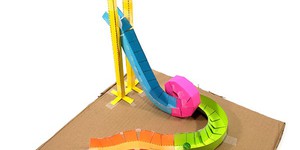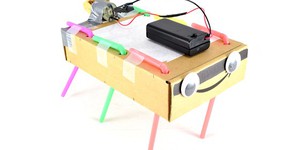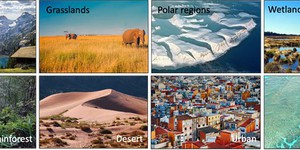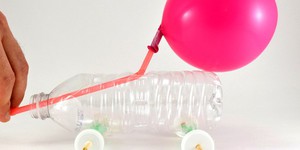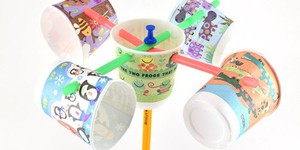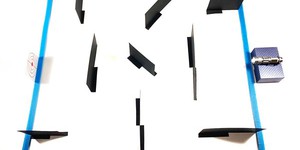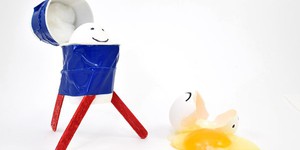Lesson Plans (247 results)
Free science lesson plans designed to engage students through hands-on experiments and activities. Chemistry, life sciences, physics, engineering and more, for elementary, middle and high school teachers.
|
Select a resource
Sort by
|
Lesson Plan
Grade: 6th-8th
24 reviews
What goes up, must come down in this thrill-seeking lesson plan! How much energy does a roller coaster car need to make it through a loop? In this lesson your students will learn about kinetic and potential energy as they build their own roller coasters from simple classroom materials.
Read more
NGSS Performance Expectations:
Featured
Lesson Plan
Grade: 6th-8th
7 reviews
Junkbots are easy-to-build robots that you can make using a simple circuit and some recyclable materials. In this lesson, your students will learn about engineering design as they compete to build the fastest robot. No previous robotics experience is required!
Read more
NGSS Performance Expectations:
Lesson Plan
Grade: Kindergarten
22 reviews
In this lesson, students play a game. Each classroom corner represents a habitat. After selecting an animal card, students have to move to the matching habitat while acting out the animal displayed on their card. By explaining why they selected a certain habitat, students realize that a habitat is a place that helps an animal survive.
Read more
NGSS Performance Expectations:
Lesson Plan
Grade: 6th-8th
20 reviews
Your students will design, build, and race balloon-powered cars in this fun lesson plan that teaches about engineering design and kinetic and potential energy.
Read more
NGSS Performance Expectations:
Lesson Plan
Grade: 3rd
13 reviews
Help the budding meteorologists in your classroom learn how to measure wind speed by building their own anemometers (wind speed meters) with paper cups and straws. Then do a simple experiment in which students change the "wind" speed using a fan and measure how fast their anemometer spins.
Read more
NGSS Performance Expectations:
Lesson Plan
Grade: 6th-8th
14 reviews
When light interacts with an object, it can be absorbed, transmitted, or reflected. This lesson focuses on materials that reflect light. Specifically, students will use mirrors and flashlights to investigate how light is reflected from a surface. By doing that, they will discover that when a light ray hits a reflective surface, its angle of incidence is equal to the angle of reflection, which is stated by the law of reflection. Students will then use their gained knowledge in a mirror maze…
Read more
NGSS Performance Expectations:
Lesson Plan
Grade: 6th-8th
10 reviews
The egg drop project is a time-honored tradition in many science classrooms. Students build a device to protect an egg and prevent it from breaking when dropped. This project typically relates to lessons about Newton's laws of motion or potential and kinetic energy. However, it is also a great way for students to practice the engineering design process, and learn about the importance of design iteration and learning from failure.
Read more
NGSS Performance Expectations:
Lesson Plan
Grade: 6th-12th
Create a two-part system for filtering greywater. Teams will focus on communication and systems engineering as they build separate components to filter solid and liquid waste and then combine them into one device.
Learning Objectives
Students will:
Consider the potential effects of drought and how greywater could be part of the solution.
Design a system for filtering out solid waste or liquid waste.
Consider effective communication strategies with their team.
Collaborate on their design…
Read more
Lesson Plan
Grade: 6th-8th
2 reviews
This hands-on science lesson will help your students get a more accurate view of the solar system by making a scale model. They will do the calculations, make model planets, and find out where to place them so their model reflects reality. Seeing the relative size of the eight planets and their distance from the Sun displayed before them will allow your students to grasp the structure and vastness of the solar system.
Read more
NGSS Performance Expectations:
Lesson Plan
Grade: Kindergarten
23 reviews
At some point, many children wish for a pet animal to play with and care for. But what does it take to keep an animal alive and healthy? In this engaging lesson plan, children will act out adopting a pet and shopping for items based on its needs. As they bring their items together, they will notice that every animal needs food, water, shelter, and air to survive.
Read more
NGSS Performance Expectations:
Lesson Plan
Grade: 2nd
5 reviews
Your students might know that plants need water to survive. But how does a plant "drink" and get water from the soil all the way up to its' leaves? In this lesson plan, students will observe how plants (flowers and celery) suck up dye-stained water, which makes the petals and leaves change color! This allows students to visualize the process of how water moves through a plant.
Read more
NGSS Performance Expectations:
|
Explore Our Science Videos
How Far Can a Sneeze Go?
Change the Reaction Rate of a Foaming Reaction
Delayed Release Pill Challenge


